Dachau Disinfection Gas Chambers"The first place visited was a large yard, in which piles of assorted clothing were stacked. In one pile were shoes, another, pants, and so on. As the group moved through the camp, we saw four large ovens in which bodies were cremated." 1st Lt. William J. Cowling, III, 42nd Rainbow Division, from his Report of the Surrender of the Concentration Camp at Dachau, 2 May 1945  The photograph above shows the south end of the Baracke X building with 4 wide doors which are open. These are the doors into the 4 disinfection chambers which were used for delousing the clothing at Dachau. The door on the far right is the entrance to a toilet. Each of the disinfection rooms has another door into an open-air hallway, as does the toilet. On April 29, 1945, the day that Dachau was liberated, the soldiers of the 42nd Division arrived at the gatehouse with the "Arbeit Macht Frei" sign, then walked north to the crematorium area which was outside the prison compound. The first thing they saw was the piles of clothing outside this building, waiting to be deloused. In this same building, the soldiers saw the crematory ovens at the north end and the homicidal gas chamber in the center. When the soldiers of the 45th Thunderbird Division of the US Seventh Army arrived separately on the same day, they entered the camp complex through a railroad gate at the southwest corner of the SS Training Center and approached the new crematorium from the west side. On the branch railroad line that ran to the SS camp at that time, they first saw an abandoned train with bodies of dead prisoners, before coming upon this building; they then proceeded south to the gatehouse entrance into the prison compound. The photograph below shows three of the disinfection gas chamber doors on the outside of the building. These doors are as wide as the rooms, to provide plenty of ventilation; the manufacturer of the Zyklon-B pellets recommended that the rooms be aired out for 20 hours after gassing. Notice that the disinfection chamber doors are the same style as the door into the homicidal gas chamber, shown in the second photo below. 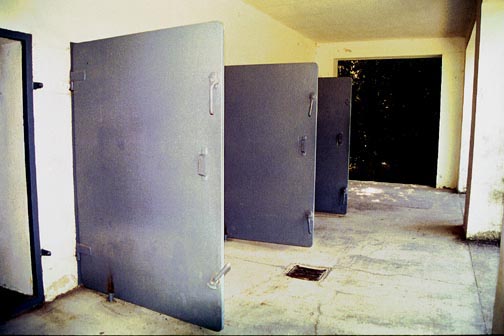 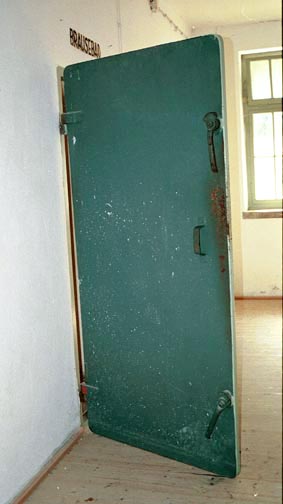 There is one floor drain on the covered porch of the building, which you can see in the photograph above, but no floor drains in the 4 delousing rooms. A close-up of the drain is shown below. It is similar to the 6 drains in the homicidal gas chamber and the 2 drains in the mortuary room. 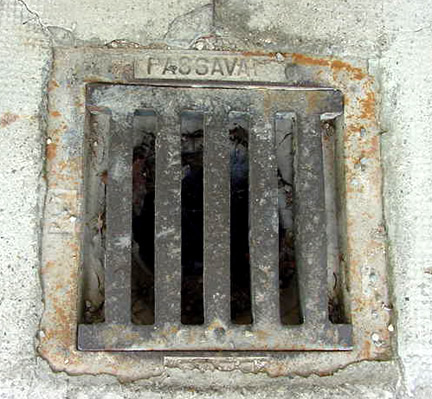 On the south side of the new crematorium building, the American liberators saw the 4 wide doors into the disinfection gas chambers. A wire was strung across the posts of the porch to hold the clothing that had just been deloused. A huge pile of clothing was on the east side of the building, waiting to be deloused. 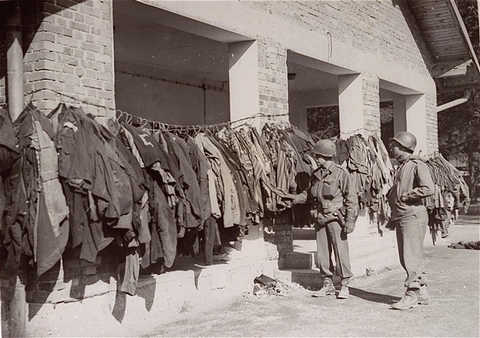 These American soldiers had never heard of using poison gas to kill lice. At that time, America was using DDT for this purpose. Typhus had been completely wiped out in America and most of these soldiers had never heard of it; they didn't know that typhus is a contagious disease spread by body lice. They saw the word "gas" written on the 4 disinfection chamber doors, and assumed that these were the infamous gas chambers used for killing the Jews. They saw the deloused clothing hung up and assumed that the prisoners had been forced to undress and hang their clothing on a hanger before entering the disinfection chambers to be killed. It had been common knowledge throughout the world since June 1942 that the Nazis were murdering millions of Jews in gas chambers. The photograph below, which was taken by T/4 Sidney Blau on April 30, 1945, shows a US soldier standing in front of one of the disinfection chamber doors. Note the word "Gaszeit" on the door, which has since been repainted. Gaszeit means gas time in English.  The caption which the US Army put on this photo was as follows: Gas chambers, conveniently located to the crematory, are examined by a soldier of the U.S. Seventh Army. These chambers were used by Nazi guards for killing prisoners of the infamous Dachau concentration camp. 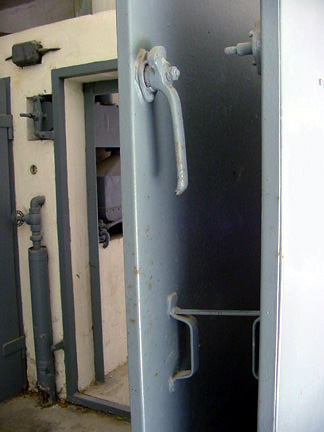 The photograph above shows the exact same door where the US soldier was standing in the photograph above. This door has now been bolted to another door so that it remains open. Today a sign over these "gas chambers" tells visitors that these rooms were "Fumigation cubicles" as shown in the photo below, taken in May 2003. 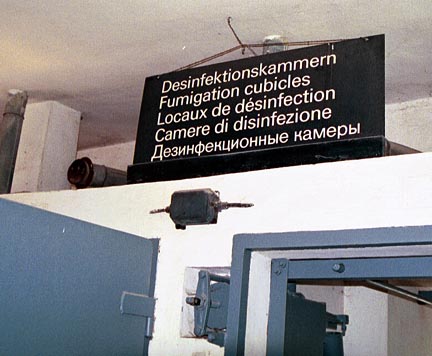 Although there is a black sign with white letters near the ceiling which says "Fumigation cubicles" in five languages, many people still think these cubicles were used for homicidal gassing. Just after I finished taking the above photograph in May 2003, a tour group entered the corridor and an English-speaking guide told the students: "When a transport of Jews was brought to Dachau, they had to remove their clothes, and then they entered these chambers where they were gassed." A film, made by the American liberators in May 1945, is shown every hour at the Dachau museum. It shows the fumigation cubicles, but does not explain that they were used for delousing clothing. This is the film that was shown at the Nuremberg International Military Tribunal as proof that prisoners were gassed at Dachau. The photograph below was taken from the open-air hallway behind the 4 disinfection rooms. You can see three of the doors into the disinfection rooms and part of the opening into the fourth chamber on the far right. 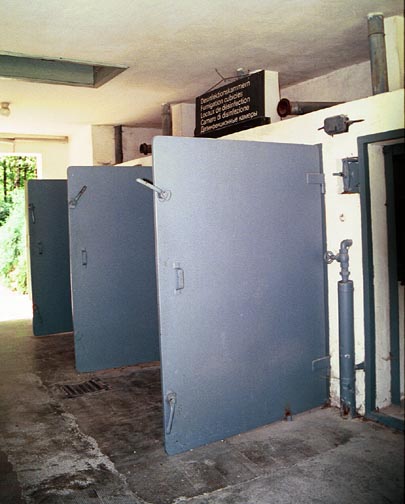 Originally, there was one disinfection gas chamber located in a half-timbered building at the northeast corner of the camp, near where the Jewish Memorial now stands. As the camp population grew, the amount of clothing to be disinfected required the building of four new disinfection gas chambers in the new crematorium building, which was finished in April 1943, according to a display at the crematorium building. ContinueOld Disinfection BuildingBack to Table of ContentsHomeThis page was last updated on March 13, 2008 |